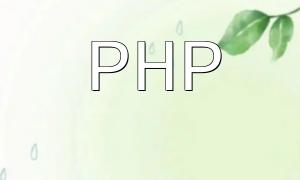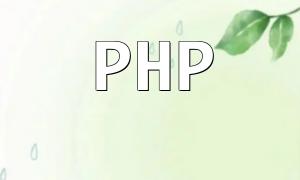With the rapid development of the internet, email has become an indispensable tool for communication in our daily work. To improve work efficiency, the automatic email forwarding feature has become increasingly important. This article will share how to develop an automatic email forwarding feature with PHP, helping you handle emails more conveniently and efficiently.
Before developing an automatic email forwarding feature, it is important to understand the basic principle behind email forwarding. Email forwarding means that when recipient A receives an email, it can automatically forward the email to recipient B or another email address. Email forwarding can be implemented using POP3 or IMAP protocols. When developing email forwarding with PHP, you can utilize libraries like PHPMailer or PEAR Mail.
PHPMailer is a powerful and flexible library for sending and forwarding emails. It can be installed using Composer. Open a command-line window and navigate to the root directory of your project. Execute the following command:
composer require phpmailer/phpmailerOnce installed, you need to include the PHPMailer library in your code:
<span class="fun">require 'vendor/autoload.php';</span>
<span class="fun">use PHPMailer\PHPMailer\PHPMailer;</span>
Before you can implement email forwarding, you must configure the email server settings, including the server address, port number, username, password, etc. Below is an example of the configuration:
<span class="fun">$mail = new PHPMailer();</span>
<span class="fun">$mail->isSMTP();</span>
<span class="fun">$mail->Host = 'smtp.example.com';</span>
<span class="fun">$mail->Port = 587;</span>
<span class="fun">$mail->SMTPSecure = 'tls';</span>
<span class="fun">$mail->SMTPAuth = true;</span>
<span class="fun">$mail->Username = 'your-email@example.com';</span>
<span class="fun">$mail->Password = 'your-email-password';</span>
You can compose the email content in either HTML or plain text format. Here’s an example of setting HTML content for the email:
<span class="fun">$mail->isHTML(true);</span>
<span class="fun">$mail->Subject = 'Email Forwarding';</span>
<span class="fun">$mail->Body = '<h1>This is a forwarded email</h1><p>The original content of the forwarded email.</p>';</span>
If you need to forward emails that contain attachments, you can add the attachments to the email as shown below:
<span class="fun">$mail->addAttachment('/path/to/attachment1');</span>
<span class="fun">$mail->addAttachment('/path/to/attachment2');</span>
Once you have configured the email server settings and added the content and attachments, you can implement the email forwarding logic. Here’s an example of how to automatically forward the email:
<span class="fun">$mail->addAddress('forward-email@example.com');</span>
<span class="fun">$mail->send();</span>
To make the code more robust, you can use a try-catch statement to handle any exceptions, such as email sending failures or server connection issues:
<span class="fun">try {</span>
<span class="fun"> $mail->send();</span>
<span class="fun"> echo 'Email sent successfully';</span>
<span class="fun">} catch (Exception $e) {</span>
<span class="fun"> echo 'Failed to send email: ' . $mail->ErrorInfo;</span>
<span class="fun">}</span>
After completing the code, you can deploy it to a server for testing. You can either run the script from the command line or trigger the automatic email forwarding feature via a web page.
By following the steps in this article, you will be able to easily implement PHP-based automatic email forwarding. With proper email server configuration, email content composition, and forwarding logic, you will significantly improve your email handling efficiency.









